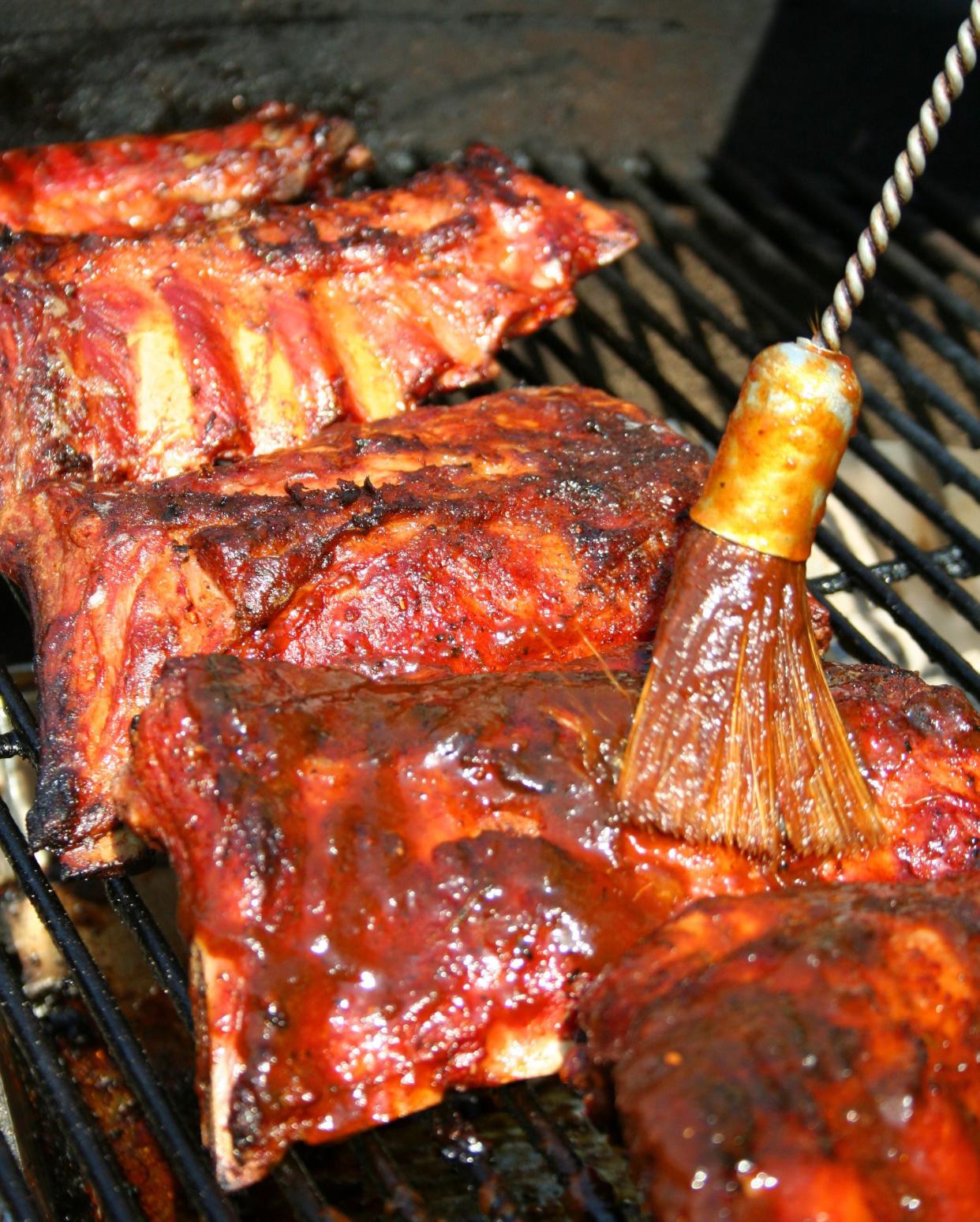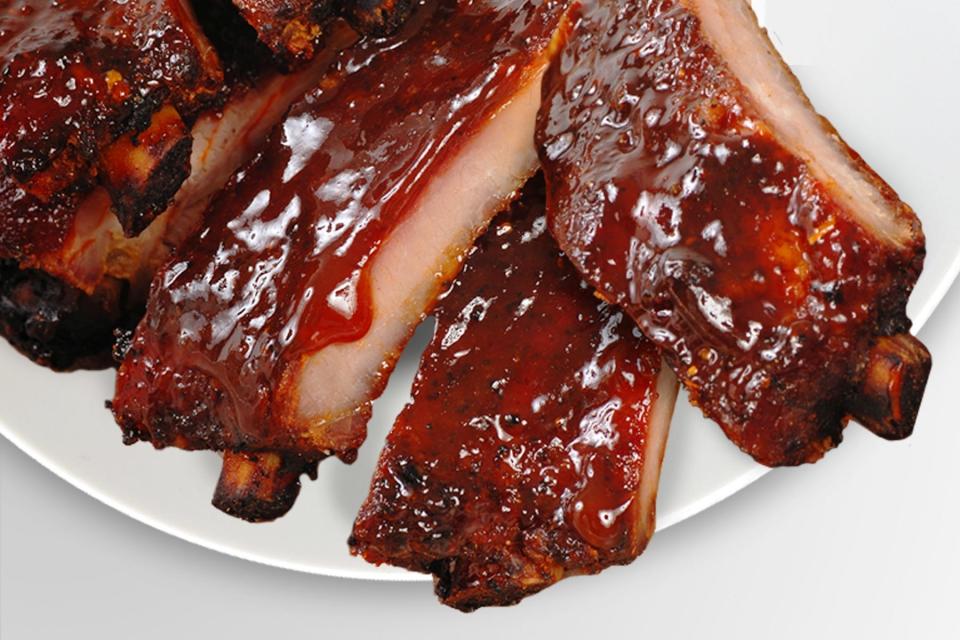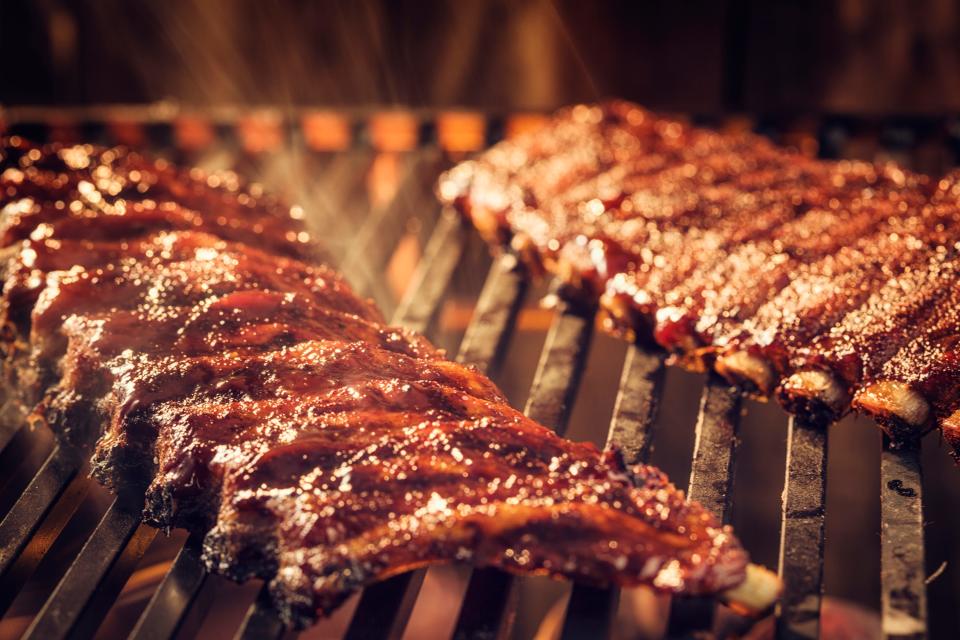Grilling ribs for 4th of July? Tips, tricks, mouthwatering recipes you need

A perfectly seasoned rack of ribs, grilled until tender — but with a little chew and not quite falling off the bone — is a beautiful thing.
For rib grillers and aficionados, it's a masterful achievement that wows guests.
Grilling takes center stage at many outdoor gatherings on the Fourth of July and ribs are often the star of such get-togethers. July 4 is the No. 1 day for outdoor grilling, and it also has been deemed National Barbecue Spareribs Day, according to nationaldaystoday.com. Baby back ribs have their own day, too. Look for that on Sept. 3.
Pitmasters are pretty serious about cooking ribs. They aim for perfection in choosing and prepping ribs, seasoning them properly and grilling or smoking them at the right temperature for the optimal time.
There’s no doubt that plenty of backyard revelers will be adding ribs to holiday parties and picnics between now and Tuesday. Whether they choose spareribs, baby back or St. Louis-style ribs, their goal will be to prepare them just right. Nobody likes tough-to-chew ribs.

Ribs should be tender (but still a little chewy). They should be flavorful but not overpowered by seasoning and sauce. And, for goodness' sake, if you’re going to sauce them, do it near the end of your cooking time. If you sauce them too soon during grilling, the sugar in most sauces will likely burn. No one wants to eat a charred mess.
Here are some of our sure-fire tips for rib grilling success:
How to choose pork ribs
Spareribs
Located on the lower part of the pig belly, spareribs have more fat, and there is sometimes a layer of fat on top. These ribs are meatier, longer and flatter than baby back ribs. The fat on spareribs adds flavor when they cook, and there's more tenderness. Spareribs also have more meat between the bones and have a skirt on the back. You can leave it on or cut it off and cook separately.
Baby back ribs
These come from high on the back side of the hog and are closest to the tenderloin. Being close to the loin means they're leaner but also meaty. Baby backs usually have 13 bones to a rack. Depending on how they've been cut, they are usually smaller and take less time to cook than spareribs.
More: Cost of a Fourth of July cookout down slightly this year
More: Add Red, White and Blue Potato Salad to your picnic table this weekend
St. Louis-style ribs
This is a full rack of spareribs with the tips cut off. Underneath is a flap of meat called the skirt, which is trimmed off. You can cook the tips and the skirt separately. Once those two pieces are trimmed off, the rack is usually trimmed to 12 bones to allow for more even cooking.
Prepare the ribs
There’s a thin membrane on the underside (non-meaty side) of the ribs. Most grilling experts and pitmasters recommend removing the membrane. Work the membrane loose using a knife and then grab and pull it off. It may not come off in one piece, which is fine. It's best to trim any excess fat.
Flavor the ribs
Using a rub adds a layer of great flavor. But before you do this, you can brush both sides of the ribs with yellow mustard or Dijon mustard. A thin layer is all you need. Mustard doesn’t add a lot of flavor, but it helps the rub adhere to the ribs. It also can help develop a slightly crispy texture. You can rub the ribs or sprinkle with preferred seasoning just before putting them on the grill, but it’s better to apply the rub and let them sit for a while. You can also add the rub to ribs, then cover and refrigerate them overnight. Be sure to apply the rub to both sides of the ribs. Most grocery stores and big box retailers carry a big assortment of rubs, marinades and mop sauces for barbecued meats. You can also marinate the ribs with your favorite marinade.
Start the grill
Most pitmasters agree that ribs should be cooked over low heat (about 250 to 300 degrees) for several hours.
They also recommend grilling over indirect heat by piling coals to one side or in a circle. Place the ribs on the grill rack where there is no heat beneath it. Direct heat should be used only for a final finish.
Note: You might have come across the 3-2-1 method for grilling or smoking ribs. This refers to cooking time. First, you smoke the ribs for three hours over low heat. From there, you wrap the ribs in foil and cook another two hours. For the final cooking, you unwrap the ribs, add sauce and cook once more for an hour. The problem with this is that six hours of cooking mostly results in fall-off-the-bone meat.

With a charcoal grill, keep the top vents open and leave the bottom vents just slightly open.
Put a disposable pan under the grill grate if using a charcoal grill.
Grilling the ribs
Use a rib rack if you have one. This allows the ribs to self-baste. The fat and juices will coat the meat. Resist the urge to constantly lift the lid to check on the ribs. This allows heat to escape.
Once the ribs are done, the meat should be tender, but not falling off the bone. Grab one of the end of the rack with tongs and move it to see that it moves easily. If it does, the ribs are done.
Add sauce at the end. Most sauces contain sugar, which will burn if left on the ribs long enough. Brush both sides of the ribs during the final 10 or so minutes of grilling.
Here are two of our favorite rib recipes from our archives:
Caribbean Pineapple Baby Back Ribs with Chile Rub
Serves: 8 / Prep time: 25 minutes (plus marinating time) / Total time: ½½ ¼hours, 45 minutes
You will need a spray bottle for this recipe.
RIBS
4 racks of baby back ribs (about 2½ pounds each) or St. Louis-style spareribs
¼ cup light brown sugar
1 tablespoon kosher salt
1 teaspoon freshly ground black pepper
2 tablespoons of favorite chile powder
2 tablespoons sweet paprika
1 tablespoon dried minced onion
1 tablespoon garlic powder
SPRAY MIXTURE
1½ cups pineapple juice
¼ cup white vinegar
2 tablespoons Worcestershire sauce
OTHER
Oil for the grill grates
Favorite barbecue sauce
To prepare the ribs: Pull the white membrane off the back (non-meaty side) of the ribs. Discard the membrane. Cut each slab in half. Place the ribs on a baking sheet that has sides
In a bowl, combine all the rub ingredients. Taste the rub and adjust seasonings as needed. It should have a sweet, salty and slightly spicy taste. Sprinkle some of the rub on the back sides of the ribs, then rub it in. Flip the ribs over and generously sprinkle the meaty side with the remaining rub. Pat the rub into the ribs. Place the ribs in the refrigerator for at least an hour or as long as overnight before grilling.
Place the pineapple juice, vinegar and Worcestershire sauce in a spray bottle.
Remove the ribs from the refrigerator at least 30 minutes before grilling. Preheat the grill with all burners on high. Oil the grill grates. Reduce the heat to medium-low and place the ribs on the grill. You want to maintain a temperature of 275 to 300 degrees. You may have to shut one burner off.
After about 25 minutes, spray the ribs with the pineapple mixture. This helps keep the outside moist during cooking and gives the ribs a little flavor. Continue grilling the ribs, spraying with the pineapple mixture every 25 minutes, about 1½ hours longer. The ribs should be nicely browned and the meat should have shrunk some from the ends of the bones and become tender.
Give the meaty side of the ribs a light brushing of barbecue sauce. Turn the meaty side down and grill for about 5 to 8 minutes just so the sauce caramelizes a bit. You can lightly sauce the back (non-meaty side) if desired.
Remove the ribs from the grill and let stand about 5 minutes before cutting into individual pieces. Serve with additional sauce on the side.
From and tested by Susan Selasky for the Free Press Test Kitchen.
Analysis per 1/2 slab ribs with rub.
510 calories (67% from fat), 38 grams fat (14 grams sat. fat), 9 grams carbohydrates, 31 grams protein, 290 mg sodium, 150 mg cholesterol, 1 gram fiber.
Best-on-the-Block Baby Back Ribs
Serves: 8 / Preparation time: 30 minutes / Total time: 3 hours, 30 minutes
Use a gas or charcoal grill. You will also need a spray bottle and, if you have one, a rib rack.
Rub (see directions)
4 racks of baby back ribs, 2½ to 3 pounds each
4 large handfuls hickory wood chips, soaked in water for at least 30 minutes, divided
SAUCE
4 slices bacon
1 cup ketchup
½ cup unsweetened apple juice
¼ cup cider vinegar
1 tablespoon molasses
2 teaspoons Worcestershire sauce
½ teaspoon smoked paprika
½ teaspoon ground cumin
¼ teaspoon kosher salt
¼ teaspoon ground black pepper
Hot pepper sauce (optional)
MOP
½ cup unsweetened apple juice
1 tablespoon cider vinegar
To make the rub, combine 2 tablespoons kosher salt, 1 tablespoon smoked paprika, 1 tablespoon granulated garlic, 1 tablespoon chili powder, 2 teaspoons mustard powder, 2 teaspoons dried thyme, 1 teaspoon ground cumin, 1 teaspoon celery seed and 1 teaspoon ground black pepper.
Remove the membrane covering the back of each rack of ribs. Lift and loosen the membrane, then grab a corner of it with a paper towel and pull it off. Season the ribs evenly with the rub. Arrange in the rib rack, standing each rack of ribs up and facing in the same direction. Let the ribs stand at room temperature for 30 minutes to 1 hour before cooking. Soak the wood chips during this time.
Prepare the grill for indirect cooking over low heat, 300 to 350 degrees.
Brush the cooking grates clean. Drain two handfuls wood chips and add them to the charcoal or to the smoker box of a gas grill and close the lid. When smoke appears, place the rib rack with the ribs over indirect low heat and cook, with the lid closed, for 1 hour. Maintain the temperature of the grill between 300 and 350 degrees.
Meanwhile for the sauce, in a medium skillet over low heat, cook the bacon until brown and crispy, turning occasionally. Drain the bacon on paper towels and eat the bacon whenever you like, but reserve 3 tablespoons of the bacon fat in the skillet and let it cool to room temperature.
In a medium saucepan, combine all the remaining sauce ingredients, except the hot pepper sauce. Whisk in the 3 tablespoons of bacon fat and cook sauce over low heat for about 5 minutes. Add hot pepper sauce, if desired. Remove the sauce from the heat.
In a small spray bottle or bowl, combine the mop ingredients. After the first hour of cooking, drain and add the remaining wood chips to the smoker box. Lightly spray or brush the ribs with the mop, particularly areas that are looking a little dry. Close the lid and cook for a second hour, maintaining the same temperature.
After the second hour of cooking, lightly spray or brush the ribs with the mop, particularly areas that are looking dry. If any racks of ribs are cooking faster than others or look much darker, swap their positions for even cooking. Cook for another 30 minutes or so.
After 2½ hours, the meat will have shrunk back some from most of the bones. If it has not, continue to cook until it does. Remove the rib rack from the grill. Close the lid of the grill to maintain the heat. Remove the ribs from the rib rack and lightly brush on both sides with some of the sauce.
Return the ribs to the grill over indirect low heat. Continue to cook with the lid closed until tender and succulent, about 15 to 30 minutes more. The meat is done when you can lift one end with tongs, bone side up, and the rack of ribs bends so much in the middle that the meat tears easily. Just before serving, lightly brush the ribs with sauce again. Cut the racks into individual ribs and serve warm.
From "Weber's Smoke: A Guide to Smoke Cooking for Everyone and Any Grill" by Jamie Purviance (Sunset, $21.95) .
Tested by Susan Selasky in the Free Press Test Kitchen
Analysis based on 6 ounces of meat with sauce and seasoning.
732 calories (69% from fat), 56 grams fat (21 grams sat. fat), 14 grams carbohydrates, 43 grams protein, 1,865 mg sodium, 205 mg cholesterol, 1 gram fiber.
This article originally appeared on Detroit Free Press: Ribs done right: Sure-fire tips and recipes from Free Press archives

